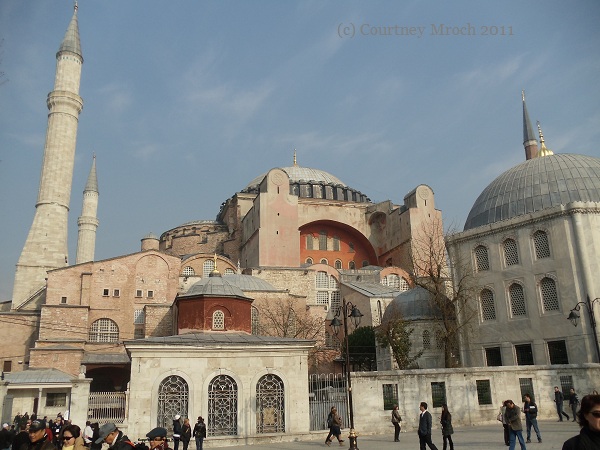
One of Istanbul’s architectural crown jewels is the Ayasofya, or Hagia Sophia as it’s also known. Upon its dedication in 360, it was used as the Greek Patriarchal cathedral of Constantinople until 1453. For a short time, from 1402-1461, it served as a Roman Catholic cathedral. From 1453 until 1931 it was used as a mosque. In 1935 it was opened as a museum, which it has been ever since.
The Ayasofya deserves a post unto itself. For this post I want to share something I hadn’t heard mentioned until we got to Turkey: the Sultan tombs.
Most Sultans were laid to rest in mausoleums at the Hagia Sophia. We went into at least four of the mausoleums, but I think there were five or six total. (Maybe more. I lost count.)
Some were more intricately adorned than others. (By “adorned” I mean the tile work that decorated the inside.) All were mini-architectural marvels unto themselves.
They were treated almost like mini-mosques. As we did whenever we visited a mosque, we had to take our shoes off and leave them outside the door. There was also a fair amount of reverence hanging in the air. I even saw some people approach the railings that surrounded the green-draped tombs with their palms up. They’d then take a moment to either say a prayer or somehow otherwise show respect. To be honest, I wasn’t quite sure what they were doing as they mouthed silently before the tombs with their heads slightly bowed. I’m assuming praying.
The tombs of each Sultan were always the largest and were adorned with the biggest turbans. Wives were laid to rest next to their husbands, with children surrounding them.
The sarcophagi of the men and boys were also adorned with turbans, albeit smaller ones than that of their Sultan papa. Women and girls had nothing atop their tombs.
In one case, in the Mausoleum of Princes, the boys with their turban-topped tombs were laid to rest together, while the lone daughter was put off to the side all by herself. That one broke my heart. Not just because it was another example of history and religion discriminating against women, but because one really is such a lonely number. The image in that tomb drove that point home.
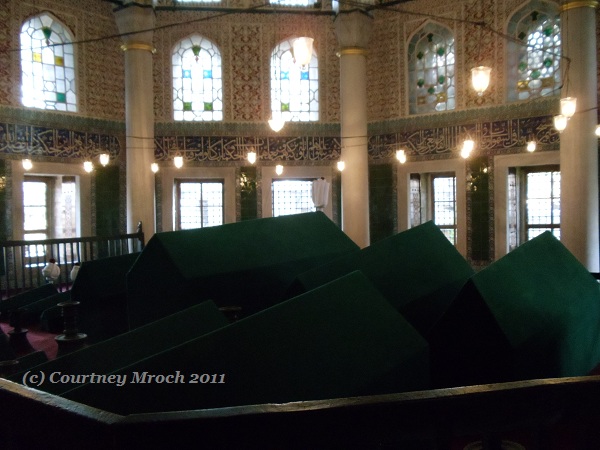
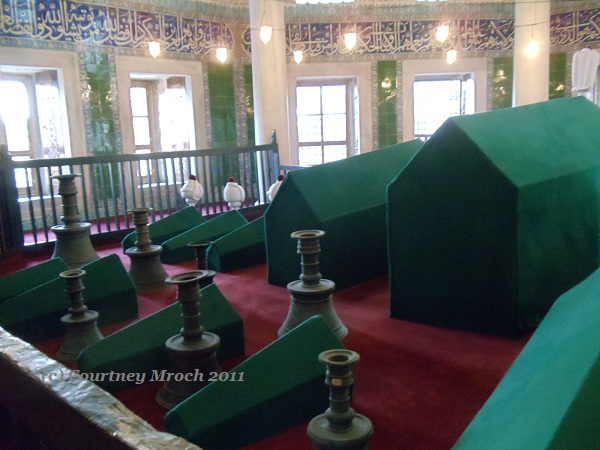
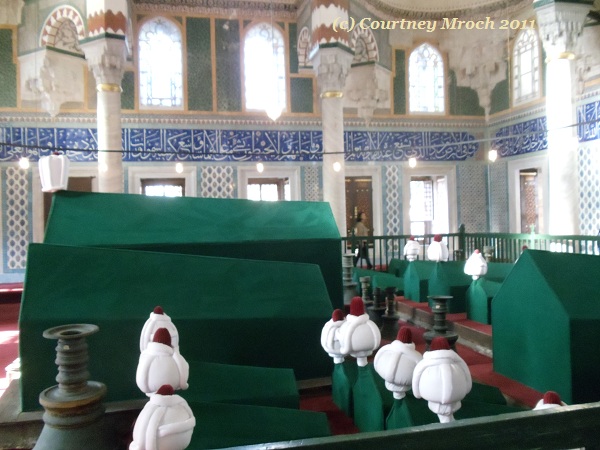
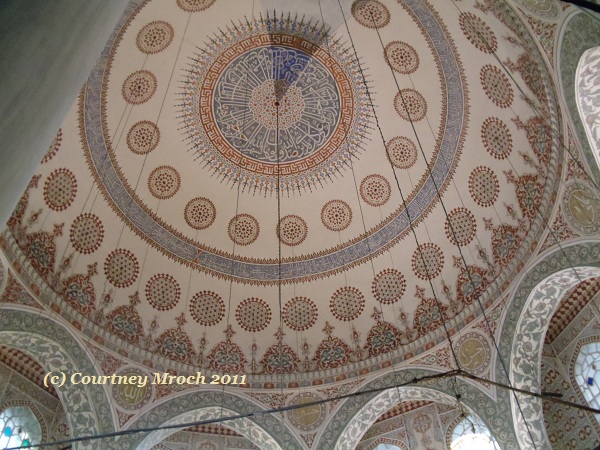
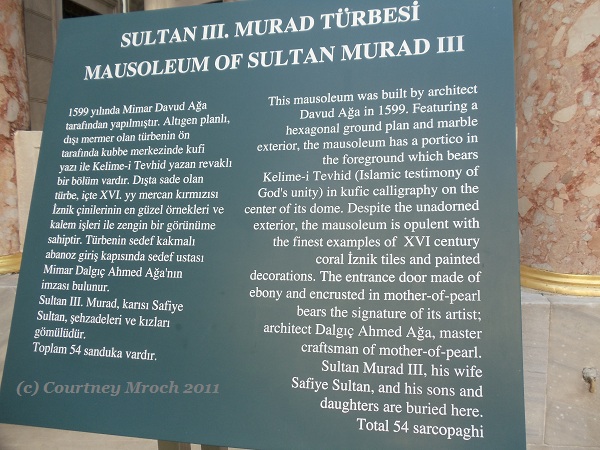
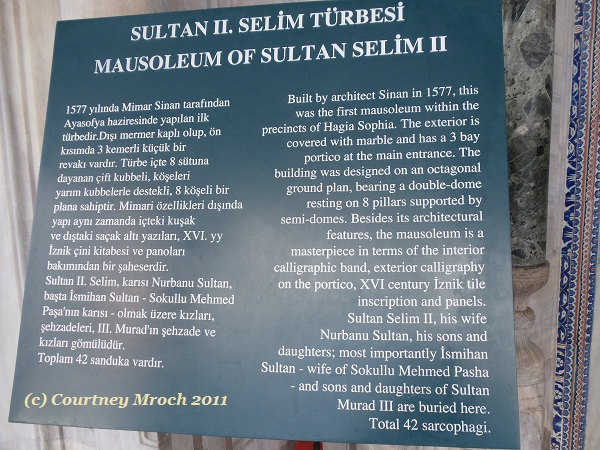
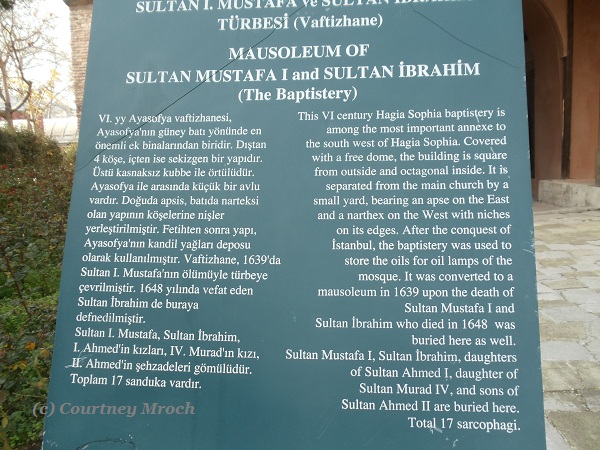
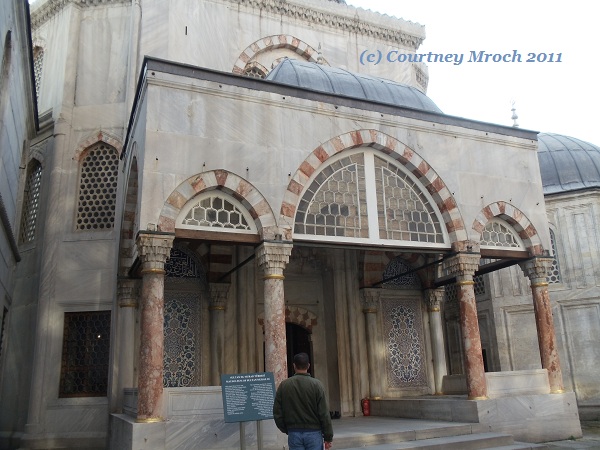
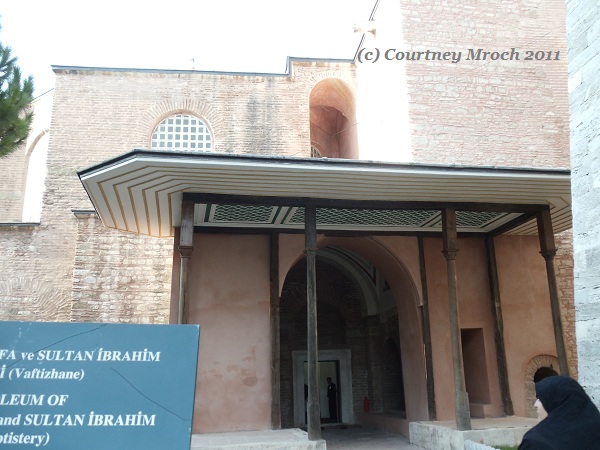
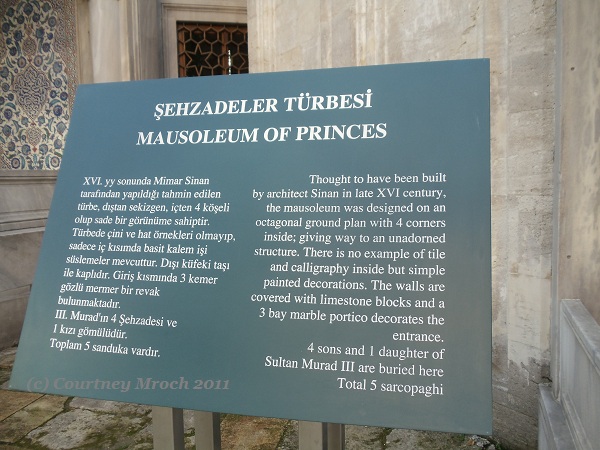
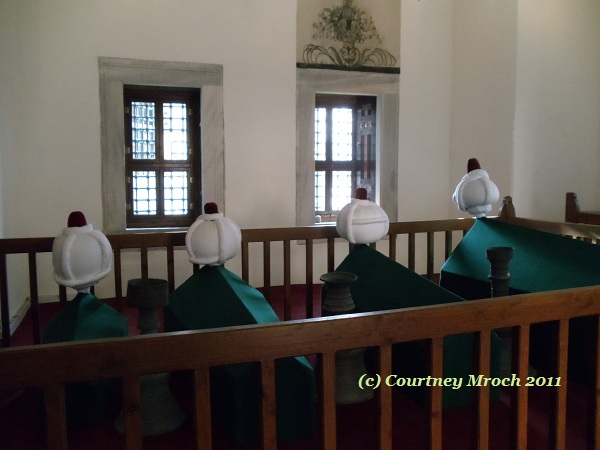
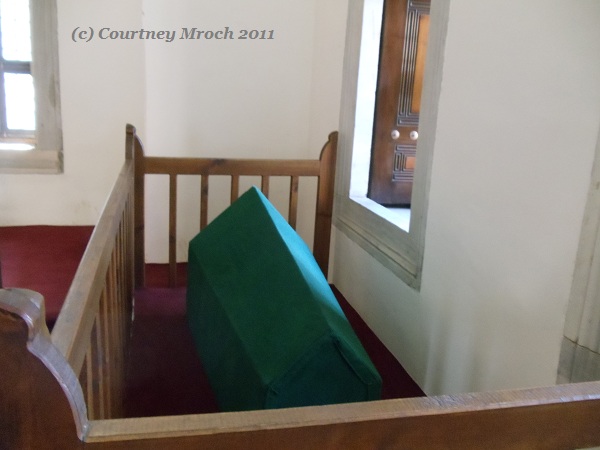
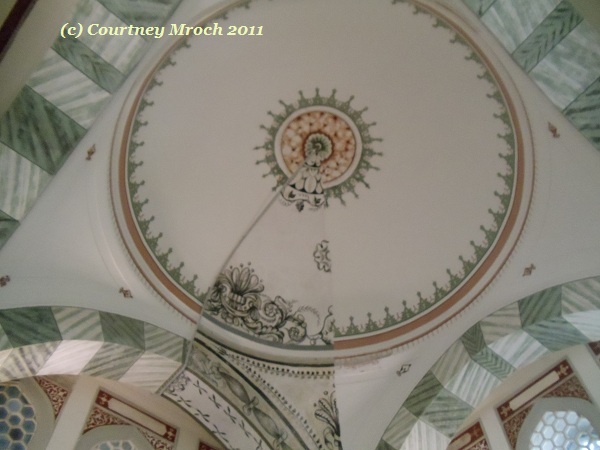
Courtney Mroch is a globe-trotting restless spirit who’s both possessed by wanderlust and the spirit of adventure, and obsessed with true crime, horror, the paranormal, and weird days. Perhaps it has something to do with her genes? She is related to occult royalty, after all. Marie Laveau, the famous Voodoo practitioner of New Orleans, is one of her ancestors. (Yes, really! As explained here.) That could also explain her infatuation with skeletons.
Speaking of mystical, to learn how Courtney channeled her battle with cancer to conjure up this site, check out HJ’s Origin Story.

totally jealous that you had seemingly BEAUTIFUL weather!! was it crowded while you were there? it looks so serene!!
i, too, was saddened to read about the daughter being placed apart from the rest. guess the rest of the world isn’t as equal as i hope it would be…
We only had one day of rain. The rest of the time it was cool, but sunny. PERFECT weather IMO for walking all around like we did. And the most crowds we encountered were on Istiklal St. (Did I spell it right?) There were definitely people everywhere else, but not mad crowds. It was kind of nice.